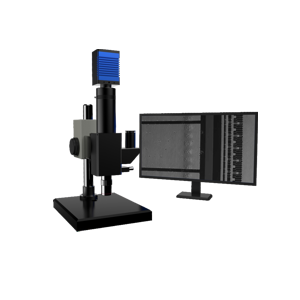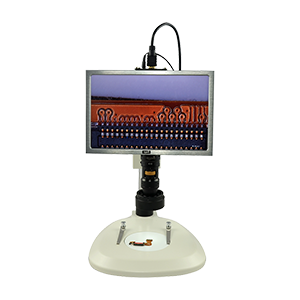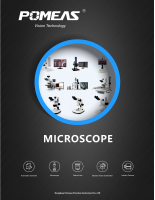Types of Microscopes Used in Science and Industry
There are many different types of microscopes, each with its own unique capabilities. Some of the most common types of microscopes used in science and industry include:
Optical microscopes: Optical microscopes use visible light to magnify objects. They are the most common type of microscope and are used in a wide range of applications.
Electron microscopes: Electron microscopes use a beam of electrons to magnify objects. They can magnify objects up to 100,000 times their actual size, and they are used to study the structure of cells, molecules, and atoms.
Scanning probe microscopes: Scanning probe microscopes use a tiny probe to scan the surface of an object. They can create images with atomic resolution, and they are used to study the structure of surfaces and materials.
Confocal microscopes: Confocal microscopes use a special type of illumination to create images with high contrast and depth. They are used to study the structure of cells and tissues.
Multi-photon microscopes: Multi-photon microscopes use a laser to excite fluorescent molecules in a sample. They can create images with high resolution and contrast, and they are used to study the structure and function of cells and tissues.
Total internal reflection fluorescence microscopes (TIRF): TIRF microscopes use a special type of illumination to create images of cells and tissues with high resolution and contrast. They are used to study the structure and function of cell membranes and organelles.
These are just a few of the many types of microscopes used in science and industry. Each type of microscope has its own unique advantages and disadvantages, and the best type of microscope for a particular application will depend on the specific needs of the user.
Benefits of Using Microscopes in Science and Industry
There are many benefits to using microscopes in science and industry. Some of the benefits include:
1. Accurate analysis: Microscopes allow scientists and professionals to observe samples at a microscopic level, providing accurate and detailed information about the sample's structure, composition, and behavior. This information is crucial for research, development, and quality control processes.
2. Accelerate research and development: Microscopes enable scientists to conduct experiments and studies at the molecular level, accelerating the discovery and development of new drugs, materials, and technologies.
3. Improved quality control: Microscopes aid in quality control in various industries, ensuring the integrity of products by inspecting their surface quality, structure, and composition. This helps to identify defects and improve production processes.
4. Increase productivity: Microscopes improve work efficiency by enabling scientists and professionals to perform complex tasks with greater accuracy and speed. They also reduce the need for manual labor and reduce errors due to human error.
5. Cost-effective solution: Microscopes can be cost-effective solutions for research and industrial settings, as they provide valuable insights at a relatively low cost compared to other advanced technologies.
Overall, the use of microscopes in science and industry has numerous benefits, contributing to the advancement of science, technology, and the economy. They provide valuable insights that accelerate research and development processes, improve quality control, increase work efficiency, and enhance collaboration between professionals from different fields.
Product recommendation
TECHNICAL SOLUTION
MORE+You may also be interested in the following information
FREE CONSULTING SERVICE
Let’s help you to find the right solution for your project!









 ASK POMEAS
ASK POMEAS  PRICE INQUIRY
PRICE INQUIRY  REQUEST DEMO/TEST
REQUEST DEMO/TEST  FREE TRIAL UNIT
FREE TRIAL UNIT  ACCURATE SELECTION
ACCURATE SELECTION  ADDRESS
ADDRESS Tel:+ 86-0769-2266 0867
Tel:+ 86-0769-2266 0867 Fax:+ 86-0769-2266 0867
Fax:+ 86-0769-2266 0867 E-mail:marketing@pomeas.com
E-mail:marketing@pomeas.com
